
But more surprisingly, the second largest city in the U.S. is home to the La Brea Tar Pits, the site of the largest collection of late Pleistocene asphaltic fossils in the world.
Located right in the middle of downtown L.A., among the freeways and skyscrapers, the La Brea Tar Pits is an active paleontological research site formed around a group of tar pits, where natural asphalt has been seeping up through the ground for tens of thousands of years. Over millennia, Ice Age animals became trapped in the sticky asphalt, which then preserved their bones as fossils.
The Tar Pits were first observed by European explorers in 1769, but were known to the Native peoples of Southern California for generations. The presence of fossils in the bubbling asphalt was not discovered until 1901 by a Union Oil geologist. When the significance of the pits was realized after years of fruitful excavation of fossils, the property's owner, George Allan Hancock, donated the land to the County of Los Angeles so it could be preserved. Excavation of the pits continued on and off through the early 20th century, and in 1977, the George C. Page Museum, which housed many of the pit fossils, was opened to the public. To date, millions of fossils are on display at the museum, which is now called the Page Museum and Tar Pits. Visitors can watch paleontologists work in the lab and get an up-close look at the research being performed.
DEADLY TAR
This story is from the April 2023 edition of Rock&Gem Magazine.
Start your 7-day Magzter GOLD free trial to access thousands of curated premium stories, and 8,500+ magazines and newspapers.
Already a subscriber ? Sign In
This story is from the April 2023 edition of Rock&Gem Magazine.
Start your 7-day Magzter GOLD free trial to access thousands of curated premium stories, and 8,500+ magazines and newspapers.
Already a subscriber? Sign In
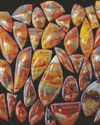
MORGAN HILL POPPY JASPER
In California, there are very few places to collect semi-precious stones. Many locations from the past have been either exhausted of the material or the land has been developed.
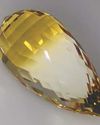
THE ACORN
The briolette gemstone has the same design attributes of a regular gemstone, however, the pavilion is elongated and the crown is usually domed. This is perfect for an elegant pendant, earrings or a pendulum.
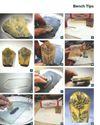
HOW TO PUT A PROTECTIVE CAP ON A CAB
To protect a specimen cab, often a cap is needed. In my case, I had a slab with the because of the color of the background and the pattern. This background had a more silicified consistency than most sandstones. It had no graininess like most sandstone, so I'm inclined to compare it to a jasper. The pattern was typical of a dendrite.

The Resilient Revival of Anne Brontë & Her Stones
For the first time, the Anne Brontë rock collection underwent complete description and identification, and along with Professor Hazel Hutchison of Leeds University and Dr. Enrique Lozano Diz at ELODIZ (a company specializing in spectroscopy analysis), an analysis of that collaboration, Anne Brontë and Geology: A Study of her Collection of Stones, was published in April 2022 in Volume 47, Issue 2 of the peer-reviewed journal, Brontë Studies & Gazette.\"

Amazing Women with Rock-Solid Careers
Explorers, Geologists, Educators & Jewelry Makers...
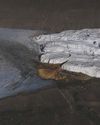
The Case of the Bleeding Glacier
It's a gory sight called Blood Falls. Ever since British geologist Thomas Griffith Taylor first noted it in 1911, it has been a mystery.
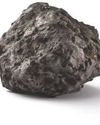
Asteroid Samples Are Said to Hold Invaluable Secrets
If Only Scientists Can Pop the Lid!
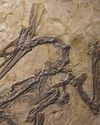
Paleontologists Embrace a New Method for Seeing Fossils within Rock
Fossil bone can be delicate. Attempts to remove it from a hard rock matrix by picking and scratching or etching with acids can be time-consuming and/or may end up obliterating that which you hope to study.

Need a Map of the Ocean Floor?
Call in the Seals!

A Step Closer to Hydrogen, the "Climate-Friendly Fuel"
As I reported last June, the world is racing to find sustainably renewable, nonpolluting sources of energy to replace our carbon-based reserves of coal, oil and gas.